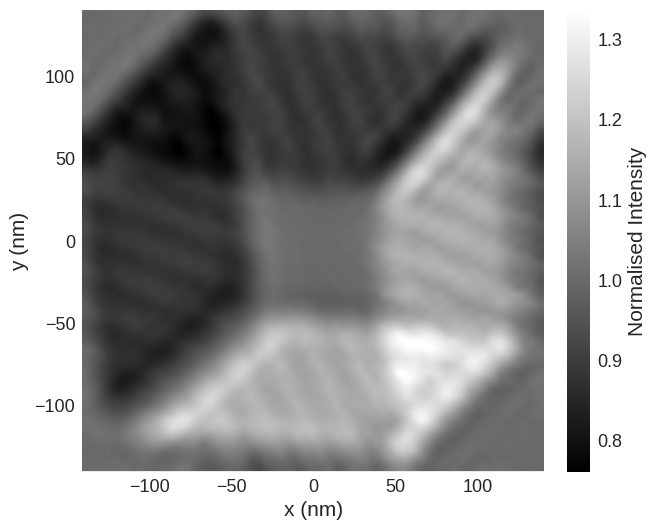Using Rotations with mag2exp#
discretisedfield objects have the functionality to be rotated. We can make use of this functionality with the mag2exp package.
This is an example of how to use the rotation functionality with Lorentz Transmission Electron Microscopy (LTEM) in order to view Néel magentisation structures. This tutorial assumes knowledge of how to use the FieldRotator class and mag2exp.ltem. Tutorials on both of these topics can be found in their relevant documentation.
[1]:
import discretisedfield as df
import matplotlib.pyplot as plt
import micromagneticmodel as mm
import numpy as np
import oommfc as oc
region = df.Region(p1=(-100e-9, -100e-9, -100e-9), p2=(100e-9, 100e-9, 100e-9))
mesh = df.Mesh(region=region, cell=(5e-9, 5e-9, 5e-9))
system = mm.System(name="Box2")
system.energy = (
mm.Exchange(A=1.6e-11)
+ mm.DMI(D=4e-3, crystalclass="Cnv_z")
+ mm.Zeeman(H=(0, 0, 2e5))
)
Ms = 1.1e6
def rho_func(r, s_size):
t = np.pi * np.exp(
-r / s_size
) # Change this function for differnt out of plane functions
return t
def phi_func(n_top, a, g):
p = n_top * a + g
return p
def m_fun_2(pos):
x, y, z = pos
phase = 0
n_top = 1
r = np.sqrt(x**2 + y**2)
theta = np.arctan2(y, x)
phi = phi_func(n_top, theta, phase)
rho = rho_func(r, 30e-9)
return (np.cos(phi) * np.sin(rho), np.sin(phi) * np.sin(rho), np.cos(rho))
# create system with above geometry and initial magnetisation
system.m = df.Field(mesh, nvdim=3, value=m_fun_2, norm=Ms)
system.m.sel("z").mpl()
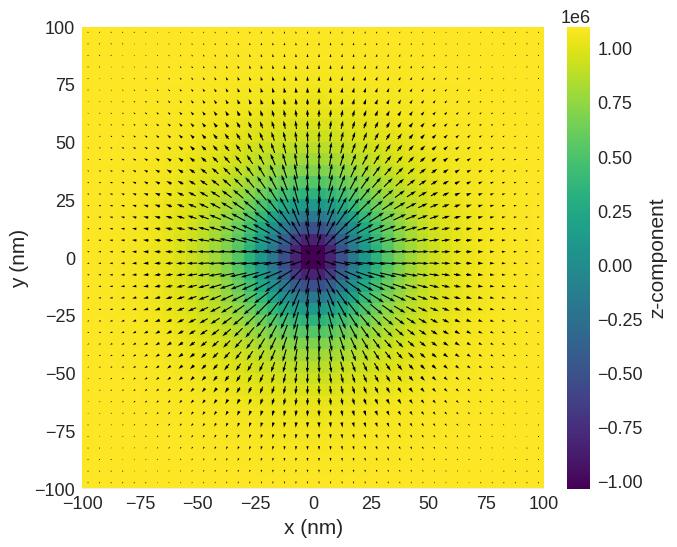
Relax the system and plot its magnetisation.
[2]:
# minimize the energy
md = oc.MinDriver()
md.drive(system)
# Plot relaxed configuration: vectors in z-plane
system.m.sel("z").mpl()
Running OOMMF (ExeOOMMFRunner)[2025-06-01T15:36:40]... (0.4 s)
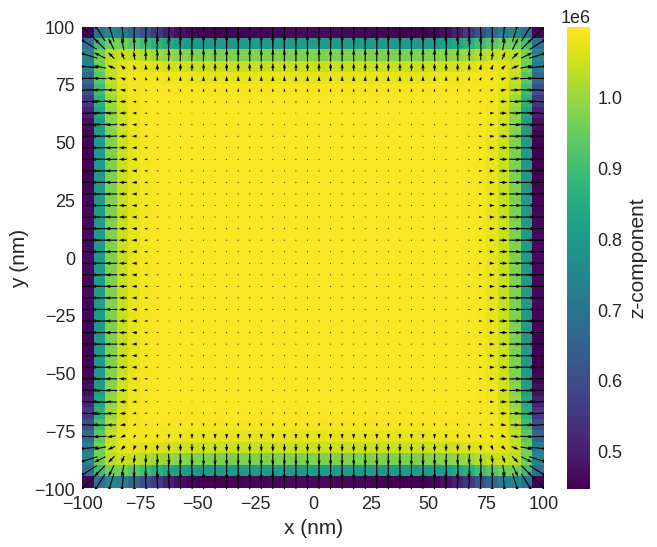
[3]:
system.m.sel("x").mpl()
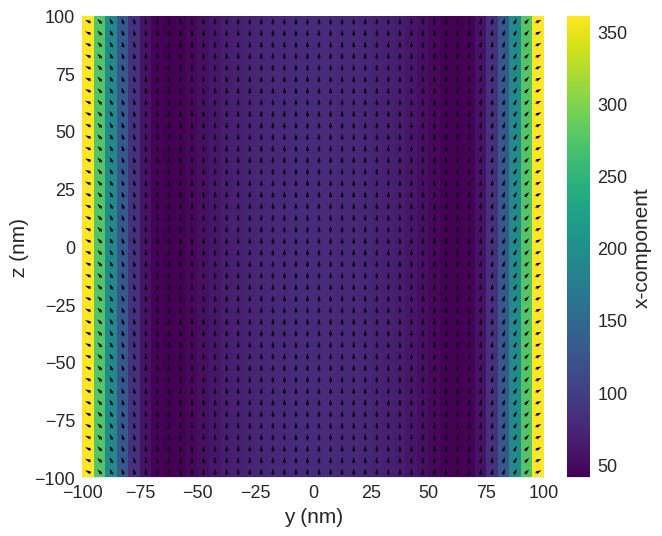
Here we have a Néel Skyrmion in a box.
Computing LTEM images#
We can use the quick_plots functionality of the mag2exp package to plot a defocused image of this magnetisation structure.
[4]:
import mag2exp
mag2exp.quick_plots.ltem_defocus(system.m, voltage=300e3)
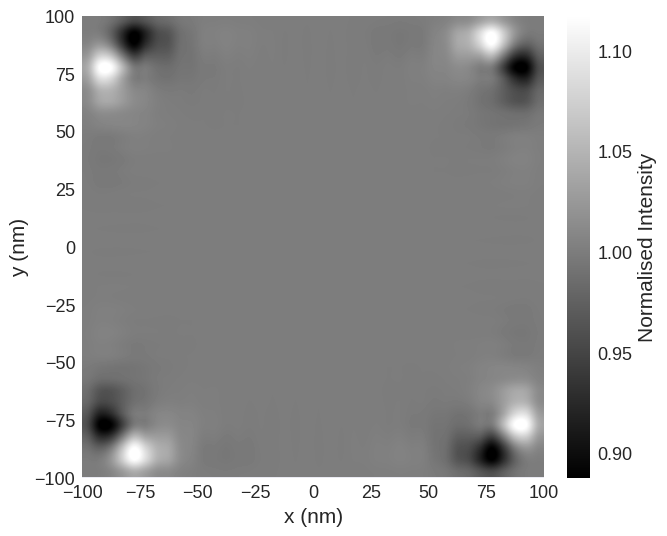
It can be seen that the the contrast originates from the corners of the sample rather than the Néel skyrmion. This is because in Néel magnetisation textures, the symmetry of the system means that when an electron is deflected due to the Lorentz force, there is usually another electron that deflected to the position of the original electron. This means that there is no overall contrast.
To break this symmetry, we can rotate the sample in space, thus creating additional contrast. Firstly we can create a FieldRotator of our field.
[5]:
field_rotator = df.FieldRotator(system.m)
We can then apply rotations of 5 degrees about the \(y\) axis, plotting the defocused pattern that is created.
[6]:
angle = 0
for _ in range(5):
field_rotator.rotate("from_euler", seq="y", angles=10, degrees=True)
angle += 10
print(f"{angle} degree rotation")
mag2exp.quick_plots.ltem_defocus(field_rotator.field, voltage=300e3)
plt.show()
10 degree rotation
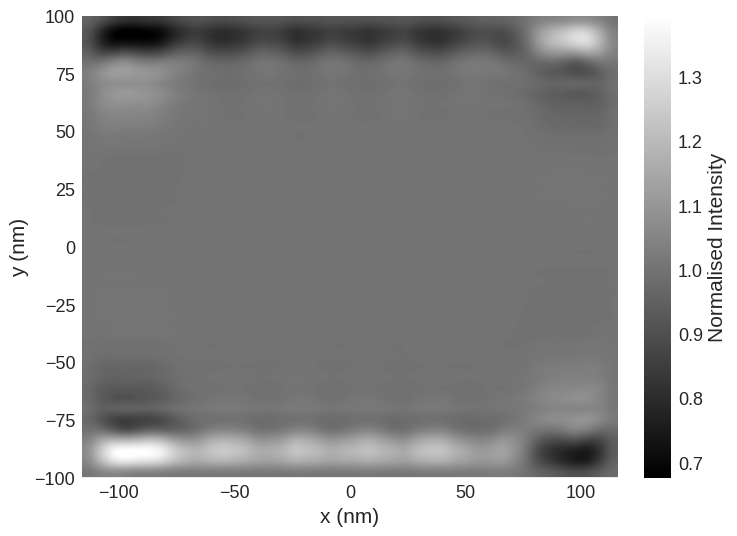
20 degree rotation
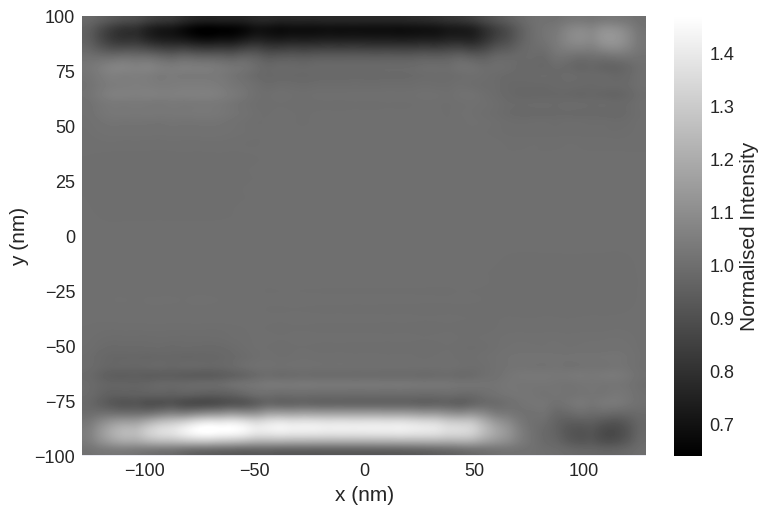
30 degree rotation
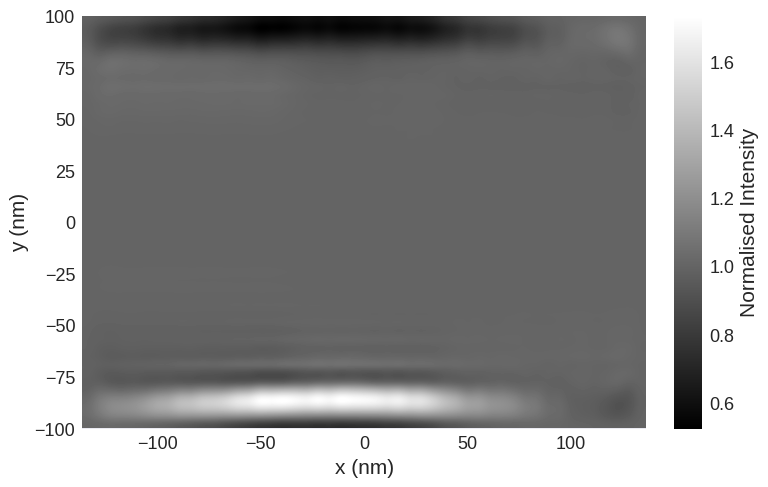
40 degree rotation
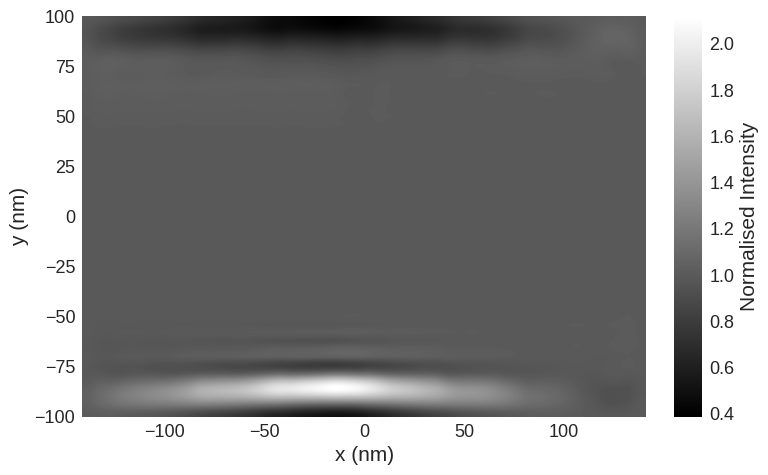
50 degree rotation
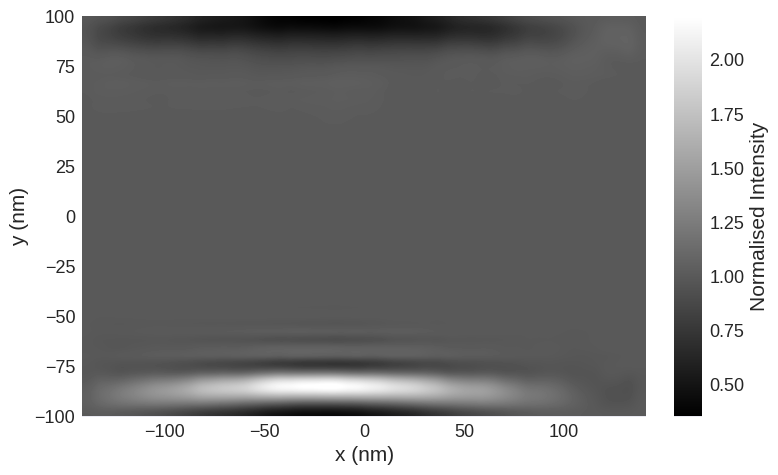
We can use any of the available rotation methods to rotate the magnetisation. Here we can see the both the contrast from the skyrmion and also from the edges of the cube.
[7]:
field_rotator.clear_rotation()
field_rotator.rotate("align_vector", initial=[0, 0, 1], final=[1, 1, 2])
mag2exp.quick_plots.ltem_defocus(field_rotator.field, voltage=300e3)
